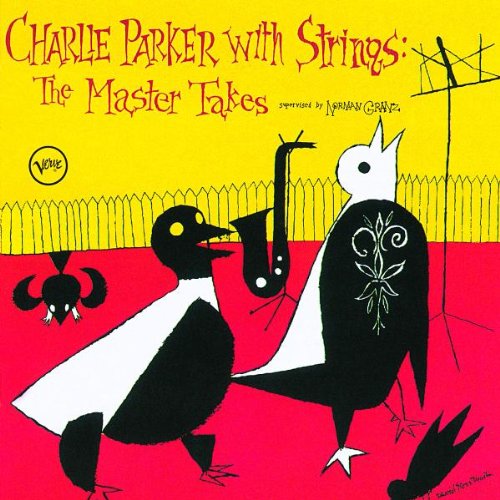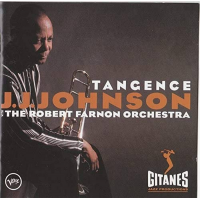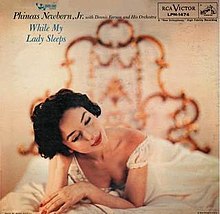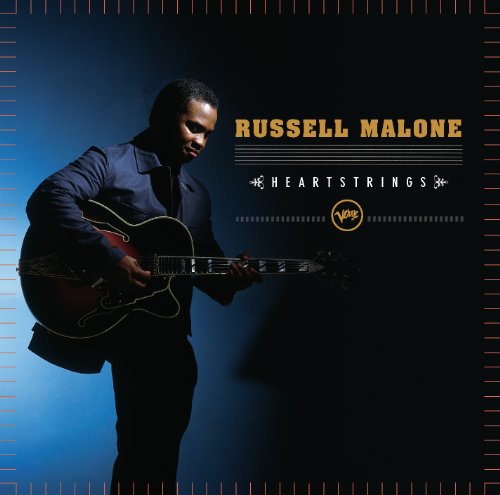Home » Jazz Articles » Building a Jazz Library » Jazz With Strings
Jazz With Strings
This musical genre has a fairly long history. Jean Goldkette and Paul Whiteman's bands used strings in the 1920s, and in 1936 clarinetist Artie Shaw recorded with a string quartet. In the mid 1940s, bands with string sections included those of Harry James, Stan Kenton, Glen Miller and Tommy Dorsey. But it was Charlie Parker's Bird With Strings sessions in 1950 and 1952 that, in a sense, legitimized the idea. Charlie "Bird" Parker was so innovative and so commanding that ever since those sessions, various jazz artists have celebrated their romantic sides by employing lush string sections—that is, if they had the budget. Everyone from Chet Baker, to Clifford Brown to Wes Montgomery did some of his best work with string sections.
Generally (but certainly not always), jazz-with-strings involves a style of play more concerned with melody and crisp, soulful phrasing than with experiments in form or harmony. But pretty, melodic jazz need not be predictable or saccharine. The best jazz-with-strings arrangements were done by writers who knew how to write for strings without asking them to swing. Rather, they put the strings inside a jazz context where their presence added a special luster. In the best representatives of the jazz-with-strings genre, the strings enhance rather than overwhelm the jazz improvisers. This style has been maligned by some fans and critics—and a lot of such writing deserves to be maligned—but there's nothing corny about the following CDs. Beautiful music, yes; syrupy music, no.
 Charlie Parker
Charlie ParkerWith Strings (Tristar-1949-1952)
Although now considered a jazz classic, this album was not well liked by many critics. But it was, supposedly, Parker's favorite of his own recordings. Strings fascinated him and he welcomed the opportunity to record standards with a small string ensemble. The results are stunning, his liquid alto soaring over the tuneful and only occasionally stiff arrangements, many of which are by Jimmy Mundy.
 Clifford Brown
Clifford BrownWith Strings (EmArcy, 1953)
This is probably Clifford Brown's most popular record, and it is one of the most beautiful jazz-with-strings recordings ever made. Neal Hefti's arrangements are delicately nuanced but also deliver up surprises (which, of course, is the essence of jazz). After nearly fifty years they remain fresh and inventive. Needless to say, Brownie is simply brilliant, displaying his warm tone on such gems as "Laura" and "Embraceable You."
 Paul Desmond
Paul DesmondDesmond Blue (BMG, 1961 and 1962)
Desmond's ethereal alto floats over a chamber orchestra of strings, woodwinds, French horn and even a harp, all arranged and conducted by Bob Prince. Guitarist Jim Hall also has his moments, as on the up-tempo "I've Got You Under My Skin." In addition, this CD includes a five-minute rendition of the classic standard "Body and Soul," which is as beautiful as the noted Coleman Hawkins' versions. This recording is a classic of the jazz-with-strings genre.
 Wes Montgomery
Wes MontgomeryFusion! (Riverside/OJC 1963)
Ignore the title. This is not fusion music but straight-ahead jazz. This recording featured Montgomery's masterful guitar framed by Jimmy Jones' stunning, large-scale arrangements. His guitar solos are brief but most melodic. Kenny Burrell plays second guitar on the date and Hank Jones (no relation to Jimmy) is at the piano. Check out "In the Wee Small Hours," a lovely ballad made famous by Frank Sinatra.
 Stan Getz
Stan GetzFocus (Verve, 1965)
This is a classic of the jazz-with-strings genre. Focus was Getz's personal favorite of his many recordings. Although it is called a "suite," it is really a collection of seven lovely melodies, each written and arranged by the talented Eddie Sauter. The standout on this noted recording is his composition titled "Her," a tune dedicated to Getz' mother.
 Bill Evans
Bill EvansBill Evans Trio With Symphony Orchestra (Verve, 1965)
Although dismissed by some critics, this CD, with arrangements by Claus Ogermann, is very lovely. Evans was very proud of this album. Ogermann's charts are sweetly romantic rather than overbearing, and this gives Evans and his trio (with bassist Chuck Israels and drummer Grady Tate) room to maneuver. Evans' composition "My Bells" is one of the stronger cuts.
 Art Pepper
Art PepperWinter Moon (OJC-1980)
In my opinion, any list of representative jazz-with-strings CDs must include this profoundly beautiful album, which far surpasses the norm for the genre. The CD is full of sublime surprises. Just to cite one example, Pepper uncorks one of the greatest solos against the rhapsodic sweep of Bill Holman's arrangement on "Our Song." The title piece, Hoagy Carmichael's "Winter Moon," is also most exceptional. If you must restrict yourself to only one "jazz-with-strings" recording, this should be the one.
 J.J. Johnson
J.J. JohnsonTangence (Polygram, 1994)
This is a beautiful CD, but there is nothing mushy about J.J.'s playing or Robert Farnon's arrangements. Johnson sounds masterful and poised on each of the selections. Check out his own composition, the lovely "Lament," or the Ray Noble standard, "The Very Thought of You." Wynton Marsalis makes three guest appearances, including a spirited unaccompanied duet with Johnson on the Lunceford tune "For Dancers Only."
 Phineas Newborn, Jr.
Phineas Newborn, Jr.While My Lady Sleeps (Bluebird/RCA, 1957, 1958)
If you look up "undervalued" in your Webster's dictionary, you will find a picture of Phineas Newborn, who is without question one of the most virtuostic pianists to ever play jazz. His continued obscurity is a mystery. If you have not heard this brilliant musician, this early recording makes a good introduction. The first shimmer of delectable strings on the opening number ("Moonlight in Vermont") announces you are in Farnon country—in this case not Robert, but his equally talented brother, Dennis.
 Tom Harrell
Tom HarrellParadise (RCA, 2001)
Unlike so many jazz-with-strings recordings, this recent Tom Harrell CD does not feature standards. In fact, it is devoted entirely to Harrell's own compositions. Paradise is far from a run-of-the-mill jazz-with-strings date. And Harrell isn't actually backed by a full-fledged string orchestra, although he does employ up to six string players on some of the material, along with a rhythm section. The selections are too complex to be hummable, yet they are most memorable and most beautiful. Harrell wrote all arrangements.
 Russell Malone
Russell MaloneHeartstrings (Verve, 2001)
Guitarist Russell Malone puts his own spin on the jazz-with-strings tradition in this more recent addition to the genre. The string arrangements are by Tommy LiPuma. The swinging but most lyrical Malone chose some excellent songs that jazzmen often overlook. Typically a jazz-with-strings project will emphasize selections from the Great American Songbook, but Malone didn't limit himself to Gershwin, Cole Porter and Richard Rodgers standards. He lends his unmistakable sound to everything from an Anne Murray hit to gospel favorites.
< Previous
Classic Bebop
Next >
The Purge
Comments
Tags
Clifford Brown
Building a Jazz Library
Roger Crane
United States
Artie Shaw
Harry James
Stan Kenton
Glen Miller
Tommy Dorsey
Charlie Parker
Chet Baker
Wes Montgomery
Paul Desmond
Stan Getz
Bill Evans
Art Pepper
J.J. Johnson
Phineas Newborn, Jr.
Tom Harrell
Russell Malone
For the Love of Jazz
 All About Jazz has been a pillar of jazz since 1995, championing it as an art form and, more importantly, supporting the musicians who create it. Our enduring commitment has made "AAJ" one of the most culturally important websites of its kind, read by hundreds of thousands of fans, musicians and industry figures every month.
All About Jazz has been a pillar of jazz since 1995, championing it as an art form and, more importantly, supporting the musicians who create it. Our enduring commitment has made "AAJ" one of the most culturally important websites of its kind, read by hundreds of thousands of fans, musicians and industry figures every month.























